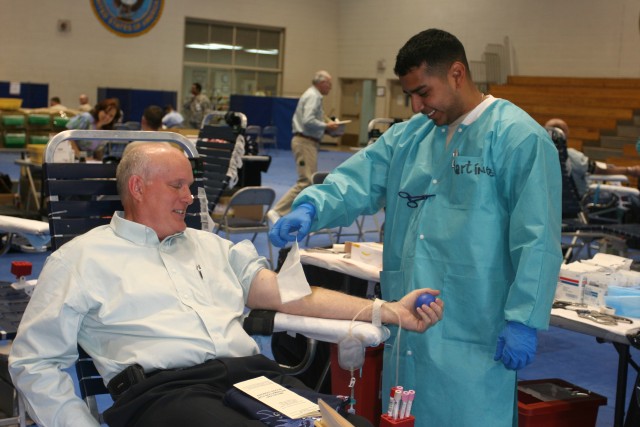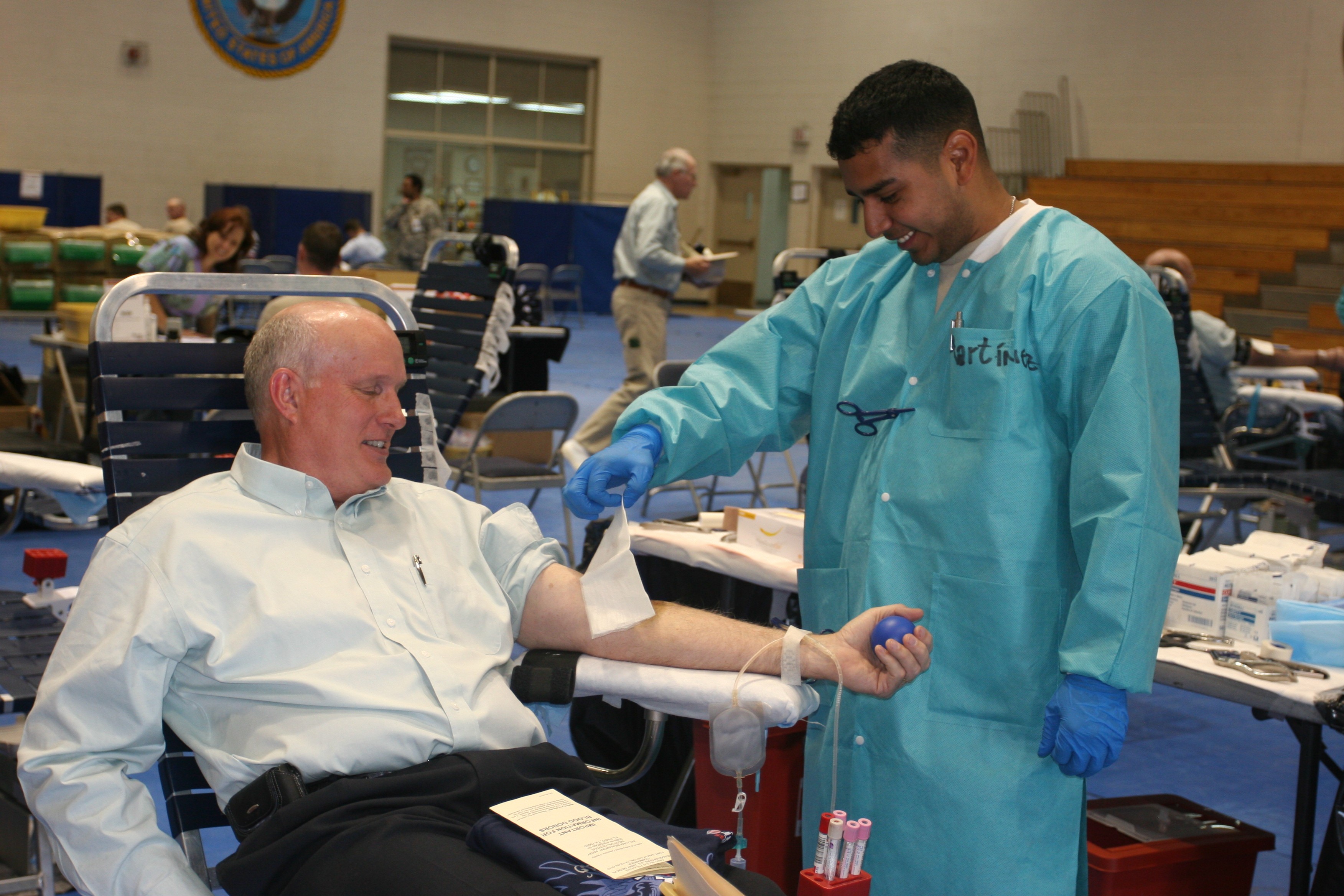
FORT HUACHUCA, Ariz. -- When Pfc. Joe Struck got a needle at the Eifler Fitness Center last year, he wasn't getting a life-saving injection. Instead, the shot he received had the potential to save the life of someone else.
Struck made a simple blood donation, a gift which may have had a significant impact on another person. He is one of millions of people who are regular donors whose gift makes a difference in people's lives.
At periodic intervals, members of the Armed Services Blood Program, Fort Bliss, Texas, come to Fort Huachuca and hold a blood drive at Eifler Fitness Center. The demand is great, and there's not enough of the vital liquid to go around.
The Military Blood Program was established in 1952 by Presidential Order as part of the National Blood Program. Today's ASBP operates at 151 worldwide locations, according to Carmen Dietrich-Williams, blood donor recruiter, Fort Bliss Blood Donor Center. ASBP was developed to provide blood products and services to the military community.
"Blood is a critical readiness item; it is perishable and must be constantly replenished," Dietrich-Williams said. "Platelets last only five days, red blood cells last about 42 days, and fresh frozen plasma lasts one year. Blood must be collected constantly to meet the peacetime and wartime needs," she added.
Dietrich-Williams explained a single battlefield injury can require 40 or more units of blood. A leukemia patient uses 30 or more blood products. While blood is given freely by military donors, the processing, storage and transportation of blood carries significant costs.
"When the ASBP cannot collect enough blood, the military must purchase products from civilian agencies, such as the Red Cross, assuming that blood is available for purchase," she explained. "The average cost of blood from outside sources is about $250 per unit."
At times, the demand for blood cannot be met at any one military installation. Therefore, the ASBP travels to other military installations to hold blood drives. The ASBP can only collect blood from servicemembers, their family members, Department of Defense civilians and retirees. They cannot collect from the general public. And, once a person donates, there is a waiting period.
"Since a donor can only donate once every 56 days for whole blood, a large donor base is important to be successful. Currently the military is experiencing a 50-percent deferral rate due to deployments and travel to Europe between 1980-1996 for six months or longer [blood collection agencies cannot collect blood from people in this category]," Dietrich-Williams explained.
"Fort Huachuca is a prime location for blood drives to support the wartime missions. Trainees at Fort Huachuca have not been deployed and therefore are eligible to donate, whereas at Fort Bliss, Fort Carson [Colo.] or Holloman Air Force Base [N.M.], permanent party Soldiers are on a continuous deployment cycle. The deferral period for travel to Iraq or Afghanistan is 12 months due to high risk malaria areas," she said.
Dietrich-Williams said the program has gone from monthly to every other month to be more cost effective. Since a donor can only donate once every 56 days, regular donors are eligible again when ASBP personnel visit.
Due to the continuous demand for blood, the ASBP has scheduling additional blood drive dates on the installation.
"Fort Huachuca is the only installation within our radius that has a training population, therefore allowing us to meet mission whenever needed," Dietrich-Williams added.
"The blood drives at Fort Huachuca began on a monthly basis back in 2003, the initial Operation Iraqi Freedom/Operation Enduring Freedom era," Dietrich-Williams explained."That's when the demand for blood increased tremendously and deployments kicked off. Prior to that, it was on a quarterly schedule, which was sufficient to meet the Army's need," she said.
Since 2003, 15,756 donations have been collected on Fort Huachuca, equivalent to 1,969.5 gallons since 2003. In 2009, ASBP had 1,575 donations, equivalent to 196.8 gallons of blood. The goal for 2010 is 201 gallons, which would take 1,608 donations. So far this year, ASBP has collected 20 gallons of blood.
For more information about donating blood on Fort Huachuca through the ASBP, go to www.militaryblood.dod.mil.

Social Sharing